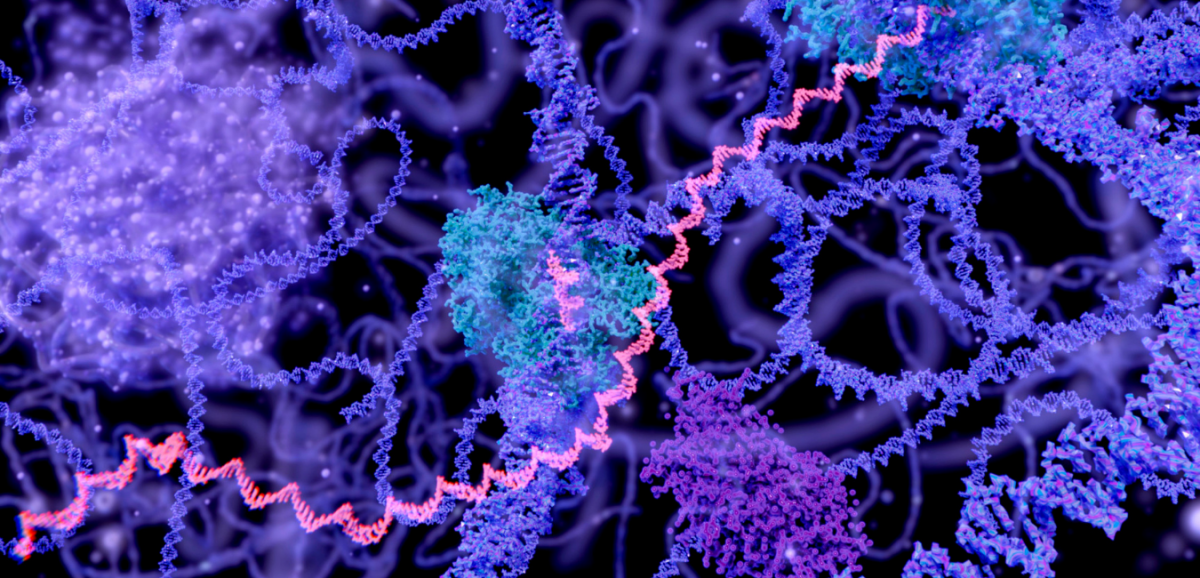Immune checkpoint blockades are remarkably effective at exposing tumor cells to immune system attack, but only in the minority of patients with highly mutated tumors. While a high number of genetic mutations may seem like a bad thing, more mutations mean tumors produce more antigens, making them more recognizable to immune T-cells, and thus more susceptible to immunotherapy. A priority in cancer research right now is figuring out ways to make less-mutated tumors “visible” to the immune system without introducing additional, potentially cancerous DNA mutations. In a groundbreaking report, Damon Runyon alumni Robert K. Bradley, PhD, and Omar Abdel-Wahab, MD, offer proof of concept that introducing errors in the short-lived RNA—rather than permanent DNA damage—still causes tumors to present antigens on their cell surface, stimulating immune response. The hope is that drugs that induce such RNA errors could be used in combination with checkpoint blockades to shrink therapy-resistant tumors.
Before RNA can be used to make proteins, it must undergo a process called splicing, during which non-coding stretches of RNA known as introns are removed. If the RNA transcript were an interview transcript, introns would be all the “ums” and throat-clearings that an editor cuts out. In the cell, the organelle responsible for making these edits is a two-part complex called the spliceosome. (The major spliceosome removes over 99% of introns; the role of the minor spliceosome, or the <1% of introns they remove, is not well understood.)
The two drugs Dr. Bradley and Dr. Abdel-Wahab have developed, indisulam and MS023, both disrupt the spliceosome’s activity. This leads to the creation of mutant messenger RNA (mRNA), which in turn codes for mutant proteins to be displayed on the tumor cell’s surface. Because mRNA degrades after delivering its message, the disruption only lasts long enough to activate immune response (which is also what makes RNA-based COVID-19 vaccines safe!) Significantly, when paired with a checkpoint blockade, indisulam triggered an anti-tumor response in mice with Lewis lung carcinomas—a type of tumor known to resist checkpoint blockades. Given these and other promising results, the researchers are now preparing to test the drugs in clinical trials.

Separately, Dr. Bradley and Dr. Abdel-Wahab have been investigating naturally occurring aberrant spliceosome behavior in the context of myelodysplastic syndromes (MDS). These disorders, characterized by disruption in blood cell production and increased risk of blood cancer, are associated with mutations in the spliceosome. In cases where MDS progresses to leukemia, the mutation frequently occurs in the minor spliceosome, suggesting this enigmatic component plays an overlooked role in regulating blood cell production.
To better understand this role and thereby illuminate some of the genetic origins of leukemia, Dr. Bradley and Dr. Abdel-Wahab employed the gene editing tool CRISPR to knock out the frequently mutated minor spliceosome gene, ZRSR2. They found that in mice with an impaired minor spliceosome caused by an inactive ZRSR2 gene, blood stem cell self-renewal was “strikingly enhanced,” leading to the uncontrolled proliferation of blood cells. This indicates that the minor intron, which should have been removed, “switches on” blood stem cell regeneration and thus can drive MDS if left in place. (Think of an “ahem” that, if retained in print, might change the speaker’s meaning entirely.) The researchers also found that another gene commonly mutated in MDS (LZTR1) is mutated at its splicing site, preventing intron removal and further confirming the regulatory role of introns.
In their decade of collaborative investigation, Dr. Bradley and Dr. Abdel-Wahab have not only identified disruptions in the splicing process that can lead to certain cancers, but have also harnessed the spliceosome’s potential for error to make cancerous cells recognizable to the body’s defense systems. In a cancer research landscape dense with the study of mutated DNA, their continued exploration of RNA science holds promise for a better understanding of cancer genesis and the development of new, transformative immunotherapies.







